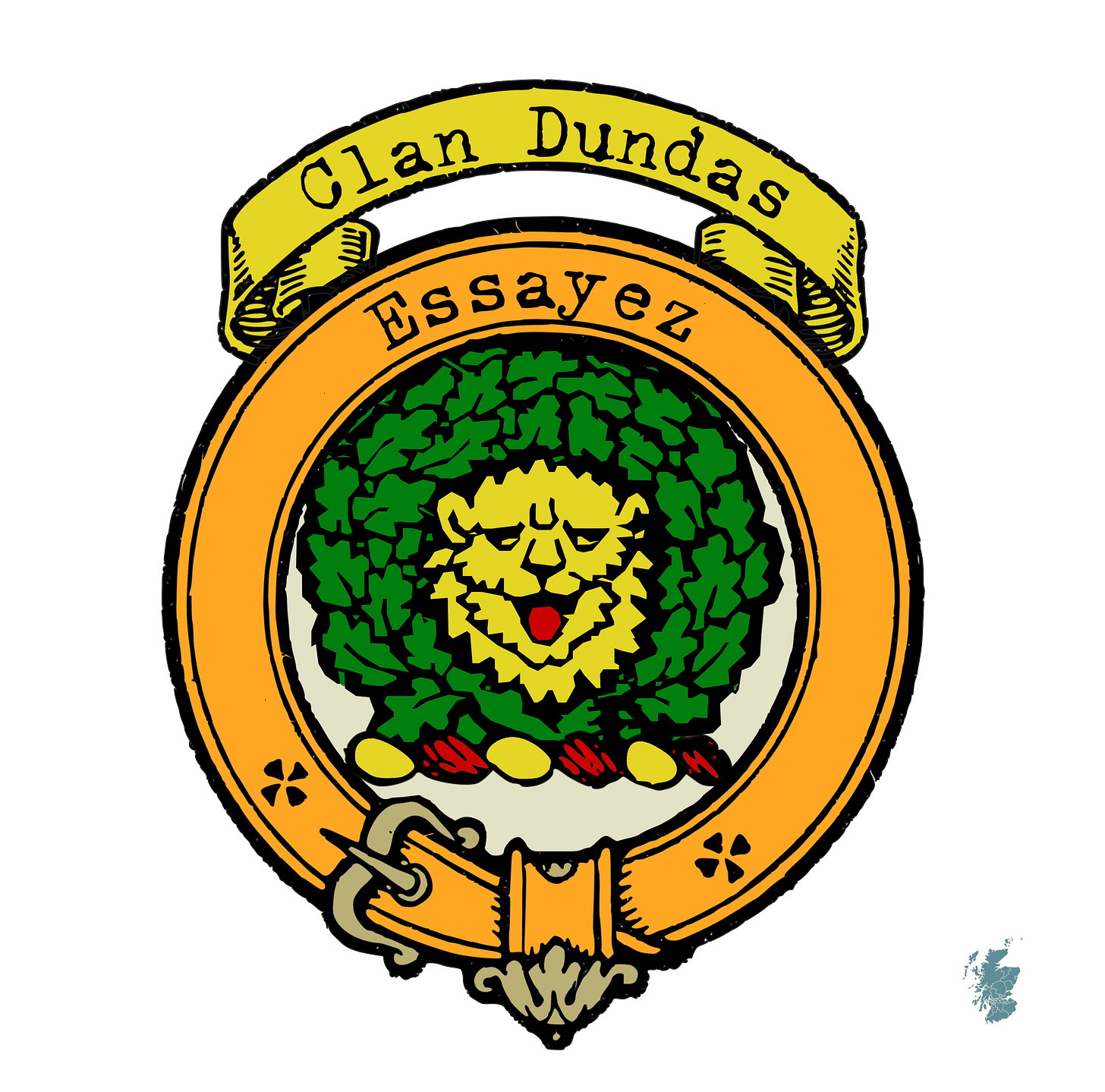Clan Dundas' Lion of Dunbar
In the annals of Scottish history, the Dundas family holds a significant place, their legacy intertwined with the rise and fall of noble houses and the shifting sands of power. Among their many heraldic symbols, one stands out for its vivid imagery and storied past: the Lion of Dunbar. This emblem, with its roots in the early 12th century, encapsulates the bravery, loyalty, and tumultuous history of the Dundas lineage.
Origins of the Dundas Family
The story begins with Waldevus, son of Cospatric, a prominent figure in medieval Scotland. In a charter dated around 1145, Waldevus granted the lands of Dundas to Helias, son of Huctred, a grant that came with the obligation of half a knight’s service. This land, located in West Lothian, remained in the Dundas family until the late 19th century. Helias, from whom the Dundas name derives, is believed to trace his lineage back to the Earls of Northumberland and the Saxon kings of England.
The Heraldic Symbol
The Lion of Dunbar became a prominent symbol for the Dundas family, reflecting their claimed descent from the powerful Earls of Dunbar. This connection is exemplified by Helias’s use of the lion rampant in his arms—a red lion on a silver field, transmuted in tincture but retaining the powerful imagery. The crest featured a lion’s head looking through a bush of oak, supported by two red lions and underscored by the family motto "Essayez" (Try).
The Legend Behind the Lion
The Dundas family’s association with the Lion of Dunbar goes beyond mere heraldry; it is steeped in legend. Tradition holds that a member of the Dundas family, while on a crusade, was captured and imprisoned in a Saracen dungeon. The crusader, inspired by the sight of a lion making a determined escape from a trap in a nearby thicket, was emboldened to attempt his own escape. The lion's successful struggle became a symbol of resilience and courage for the Dundas family, encapsulated in their heraldic crest and motto.
Historical Significance
The Lion of Dunbar not only represents the Dundas family’s noble lineage but also their enduring presence in Scottish history. The use of the lion rampant in their arms symbolizes strength, bravery, and a fierce determination to protect and uphold their honor. This imagery was particularly resonant in the medieval period when noble families often faced threats from rivals and invaders.
The family’s prominence is further highlighted by their roles in key historical events. For instance, Saer de Dundas, a descendant of Helias, is listed among the Scottish nobles who swore fealty to Edward I of England in the late 13th century—a document known as the Ragman Roll. This act of homage, while politically complex, demonstrates the Dundas family’s significant position within the Scottish nobility.
The Dundas Family’s Legacy
Over the centuries, the Dundas family maintained their influence and status, navigating the turbulent political landscape of medieval and early modern Scotland. The Lion of Dunbar continued to serve as a powerful symbol of their heritage and resilience.
Sir George de Dundas: Founder of the Carmelite Priory of Queensferry in 1330 and a loyal supporter of King Robert the Bruce, exemplified the family’s commitment to their land and their king.
James Dundas: Engaged in significant disputes with the Abbot of Dunfermline, highlighting the family's involvement in the complex interplay of church and noble authority.
Archibald Dundas: Defended the Dundas estates during the forfeiture conflicts of the mid-15th century, showcasing the enduring strength and resolve symbolized by the Lion of Dunbar.
Conclusion
The legend of the Lion of Dunbar is more than just a heraldic symbol for the Dundas family; it is a testament to their storied past and enduring legacy. Through centuries of political upheaval, familial alliances, and noble endeavors, the Dundas family has stood resilient, much like the lion in their crest.
The story of the Lion of Dunbar serves as a reminder of the values of bravery, loyalty, and perseverance that have defined the Dundas family for generations. It is a symbol that continues to capture the imagination, reflecting the rich tapestry of Scotland’s noble heritage and the enduring spirit of one of its most storied families.
Understanding the significance of the Lion of Dunbar offers valuable insights into the broader historical context of Scottish heraldry and the enduring legacies of its noble houses. The Dundas family's emblem remains a powerful reminder of their place in the annals of Scottish history, a legacy that continues to inspire admiration and respect.





